Seconded By: Vladimir Karamazov,
This series explores urban landscapes and architectural transformation through a distinct engagement with the panoramic format. Challenging conventional representations of architecture, the work highlights the temporal and spatial ambiguities of urban environments. Expansive horizontal compositions reveal the interplay between permanence and impermanence, horizontality and verticality, and the shifting dynamics of construction, decay, and renewal.
The panoramic format, with its inherent horizontality, creates a compelling contrast when applied to architecture. This tension between the expansive sweep of the cityscape and the structures that define it foregrounds a dialogue on mass, scale, and perspective and their interrelationship with global cultures.
Panoramic photography disrupts traditional architectural representation, positioning the viewer as an active participant rather than a passive observer. Traditionally associated with documentary and survey photography—often used to chronicle territorial expansion—the panoramic image here becomes a critical tool for reinterpreting the urban fabric. As globalisation erodes distinctions between places, cities are increasingly shaped by the same economic and aesthetic forces. The panoramic photograph—historically a medium for capturing places anew—now interprets these global influences through the tensions they create within urban environments.
By examining how urban spaces are formed, used, and repurposed, this series contributes to a broader discourse on the intersection of photography, architecture, and spatial experience. It invites reflection on how the panoramic format, through its sweeping horizontality, mediates our understanding of landscape, constructed spaces, historic precedent and the evolving nature of the city.
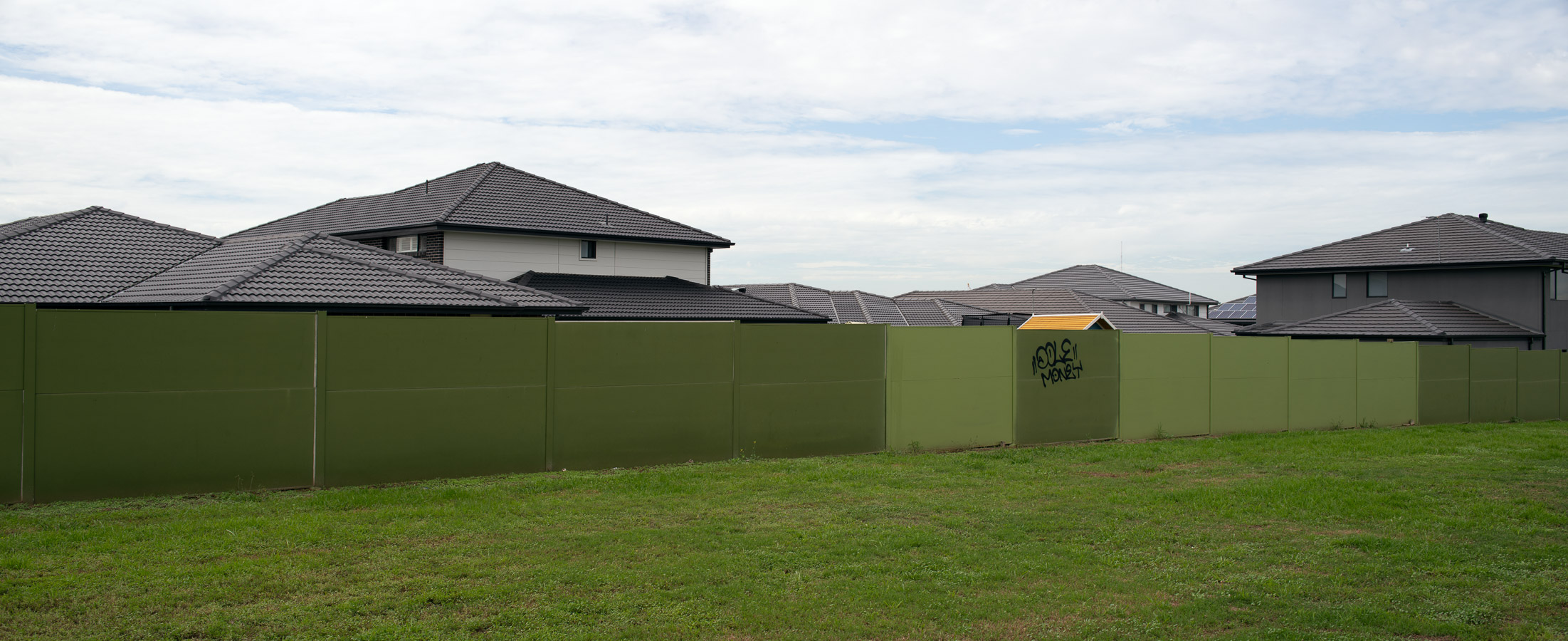
Mary Wade Place, Carnes Hill, Sydney
I want the viewer to recognise this as a real, everyday place but also be struck by something that is not quite right, something odd, or disturbing, which triggers further consideration of what they are looking at. In this sense, I am challenging the viewer’s interpretation of spatial and structural reality. I want them to see the reality of the scene but be affected by its ‘artificiality’ and question whether what they are looking at is in fact real.
On first viewing Mary Wade Place, Carnes Hill we register a suburban scene of tightly packed homes in a new residential development. But the juxtaposition of a dominant fence and the tight strip of rooftops, above and behind, with the band of grass in the foreground, simplifies the architectural rendition, reducing the information and detail (save a scrawl of graffiti and token daub of orange).
This makes the architecture appear so simple that it could be mistaken for a cardboard cut-out.
I use the elements in Mary Wade Place, Carnes Hill to balance reality and fiction, evidence and
association, in order to draw attention to the features that I discovered in this contemporary
Australian suburb.
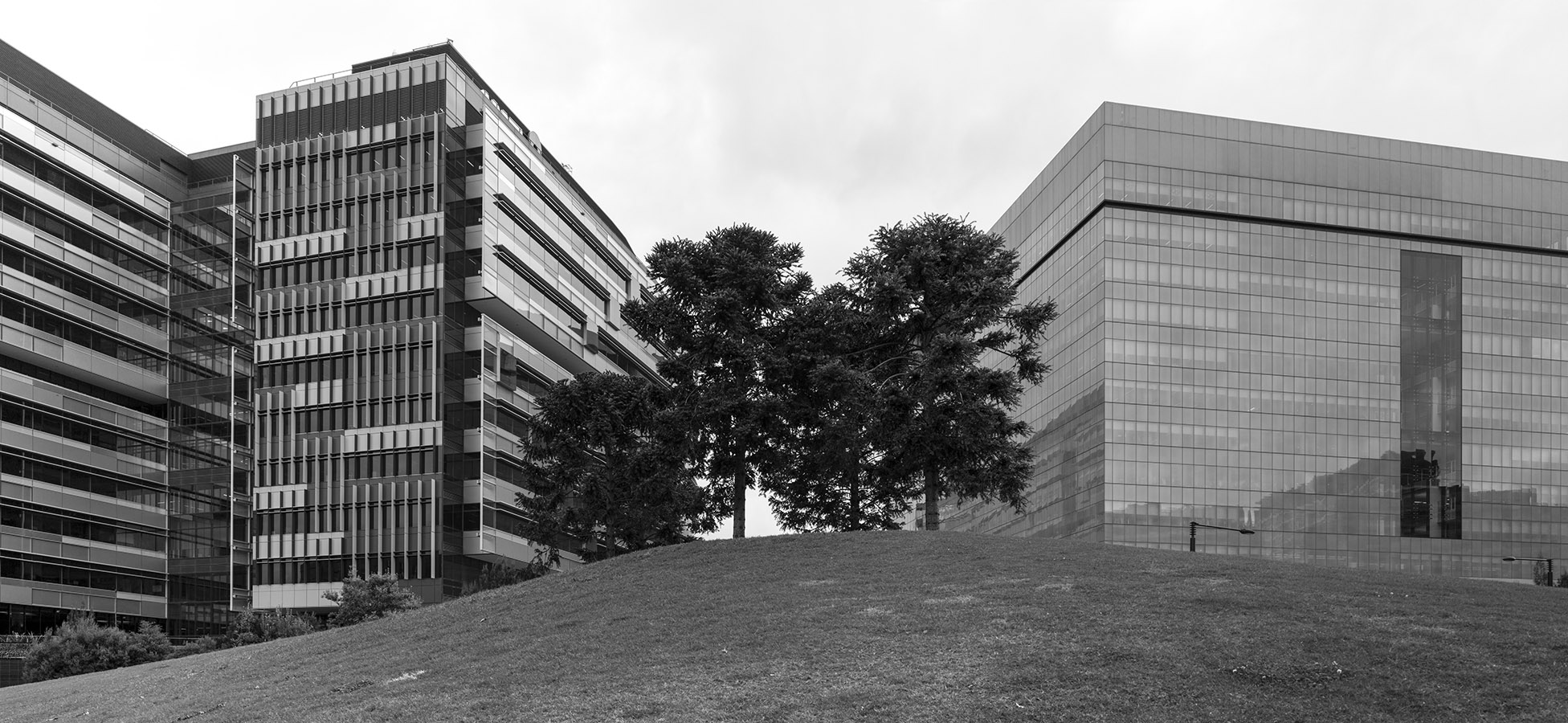
Docklands, Melbourne
An ongoing urban renewal project west of Melbourne’s city centre, Docklands precinct makes use of remnant docks and related heritage buildings and further extends the central business district. Such developments endeavour to create a ‘balanced’ environment of architecture, landscape and amenity.

Palace of the Republic, Berlin
In 1995, Berlin was undergoing significant urban transformation. With the fall of the Berlin Wall, creating a balance between the remnant architecture and public space of the former German Democratic Republic, reflecting both its history and future character, was well underway. The future existence of Palace of the Republic, a strong example of both the GDR and mid-century modernism, was at this moment in the balance.
The photograph attempts to accentuate that balance by striking an ambiguous interpretation as to whether it is under refurbishment or demolition.

Invisible Histories I, II, III
This triptych investigates the shape-shifting nature of a Sydney city building site. Each image
aestheticises fleeting moments to stimulate considerations beyond the perfunctory of building
construction, to reveal hidden stories and associations:
a shadow-building reminds us of former structures and their cultural relationship;
an eldrich-like arch of hoarding and scaffold alludes to a financial world nobody fully
comprehends;
reflections – shimmering against an exposed wall – appear as apparitions of vanquished lives.
Such interpretations stimulate thoughts regarding the significance of proposed structures, provide freedom to elaborate the increasing interconnectedness of the local with the global, and reveal untold truths that background this nation’s development.

Pingyao Wall, China
The ancient city of Pingyao, China, a World Heritage site dating to 800BC, features a significant structural component. The city’s walls are still intact and fully surround the low-rise homes, commercial buildings and remnant light industry precincts. The walled city in China was so fundamental to urban design and living that the Chinese word for wall, ‘chéng’ refers to both the wall and the city. Thus, a city is not a city without a wall.
The Pingyao wall is an ancient, robust and magnificent structure. This panoramic photograph consolidates these traits through a minimalist composition – ground, wall, sky. The slight, two-point perspective angled view allows time to register its solidity, texture, earthy tones as it gently leads the eve along its length reinforcing its longitudinal scale.
The wall, in China and around the world, has been fundamental as a physical barrier to unwanted visitors and thus protection to residents from potential danger. Beyond the wall the city sprawls, spawning fledgling barriers for purposes anew. The ancient wall is a reminder of simpler, singular purpose.
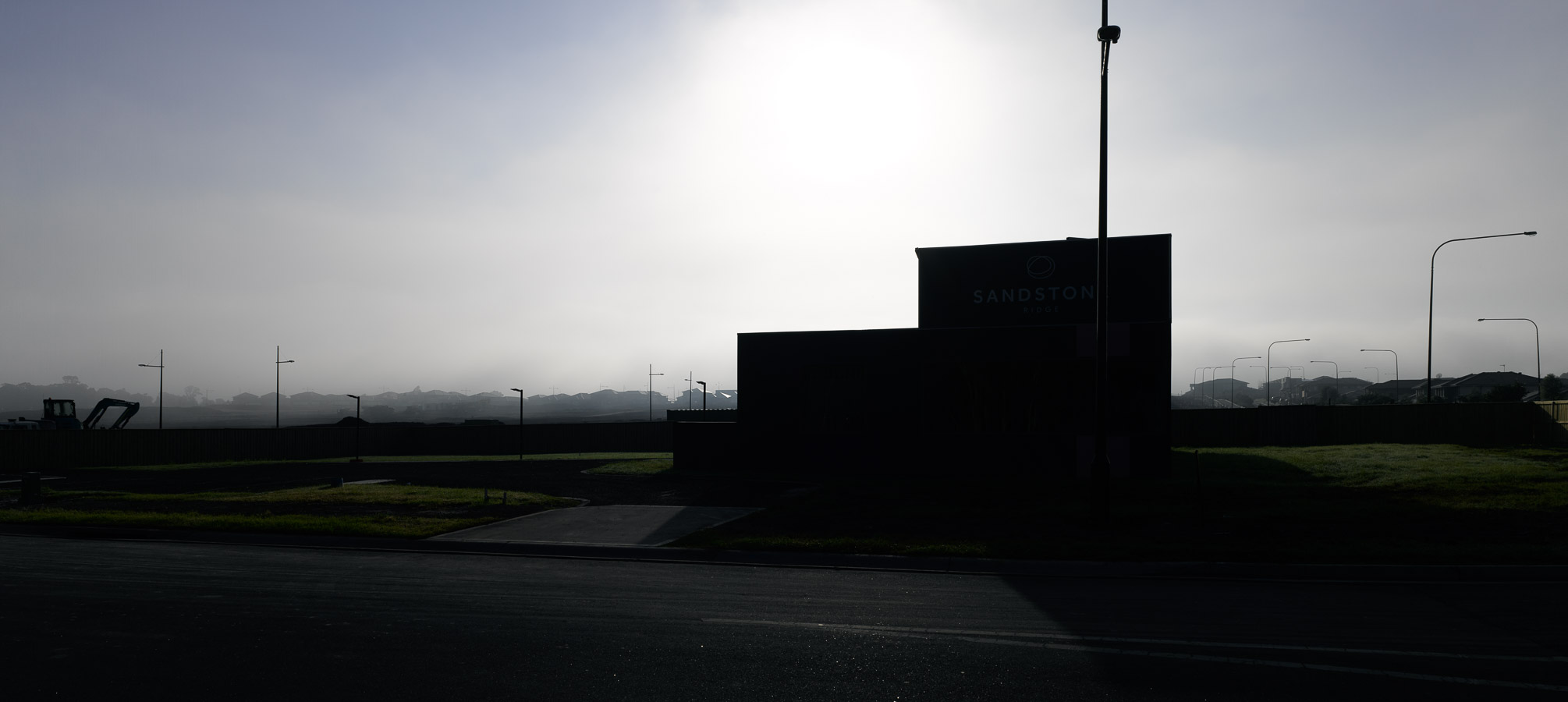
Sandstone Ridge, Colebee
Sandstone Ridge is a housing development in the new suburb of Colebee in north-west Sydney.
I visited early one winter’s morning and made this photograph – which is split in half horizontally.
Above this split, the distant horizon is a jagged line leading to the clean vertical sticks of streetlamp posts and bright specks of roofs reflecting the sun. A glowing sun-spot on the top edge of the frame is diffused by vestiges of morning fog. Below the horizon, barely visible, is a new fence in the foreground, near to the camera. Dominating the centre of the frame is a stepped structure, its true identity is unclear. It is a built landscape scene of dark tones and minimal detail that delivers a moody, indistinct definition of this place. This is what attracted me and what I aimed to encapsulate: the contemporary vision of suburbia is indistinct, the values inherent to the suburban dream have receded into the shadows, that which is clear is only a glimmer of a minor detail (of the future?) on the distant horizon.
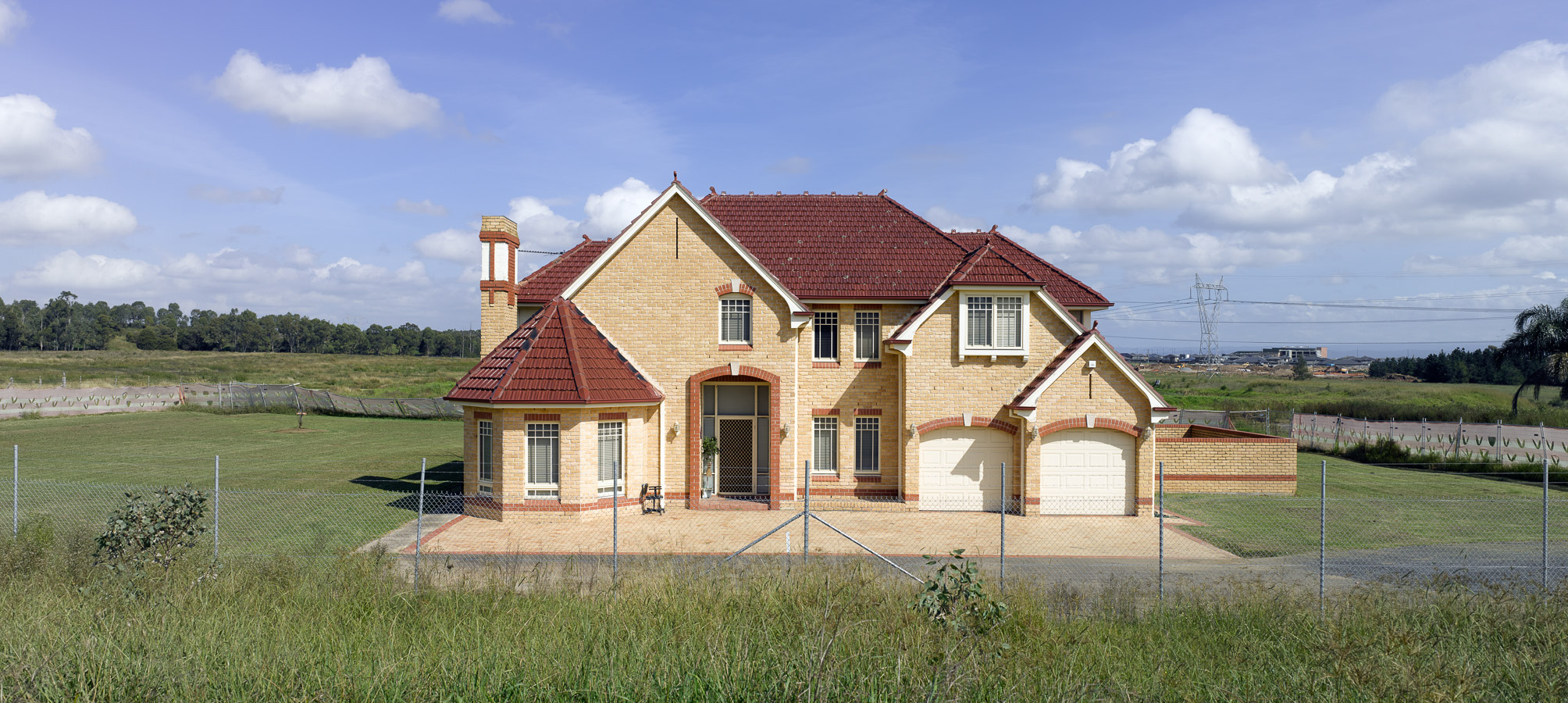
Richmond Road, Marsden Park
A key point of my research is that architecture produced in Australia reveals little about the character and intent of its makers. Rather it exhibits an uncertainty of identity. The character that the house in Richmond Road, Marsden Park presents is representative of this uncertainty: a misguided consideration of architecture as an outlet for grand statements of individualism.
This building appears as if helicoptered in from above, like a giant Lego construction plonked incongruously onto the landscape. It is weird, spectacular, grotesque, and hard to ignore. I have usurped the traits of architectural photography’s ‘hero shot’ and reassigned them to a grandiloquent example of Australian housing. The vast majority of houses in this country are poorly designed and inappropriate, simply dropped into place, with scant regard for their relationship to place or future legacy.

Battersea, London
The urban development boom in London during the 1990s, touched all facets of the built environment: public space, commercial, residential and transport infrastructure. This elevated structure provided a rail link to a new trainline from London to France and beyond. Working with a 6 x 17 cm format panoramic film camera, it perfectly captured the sweeping lines from this elevated vantage point.
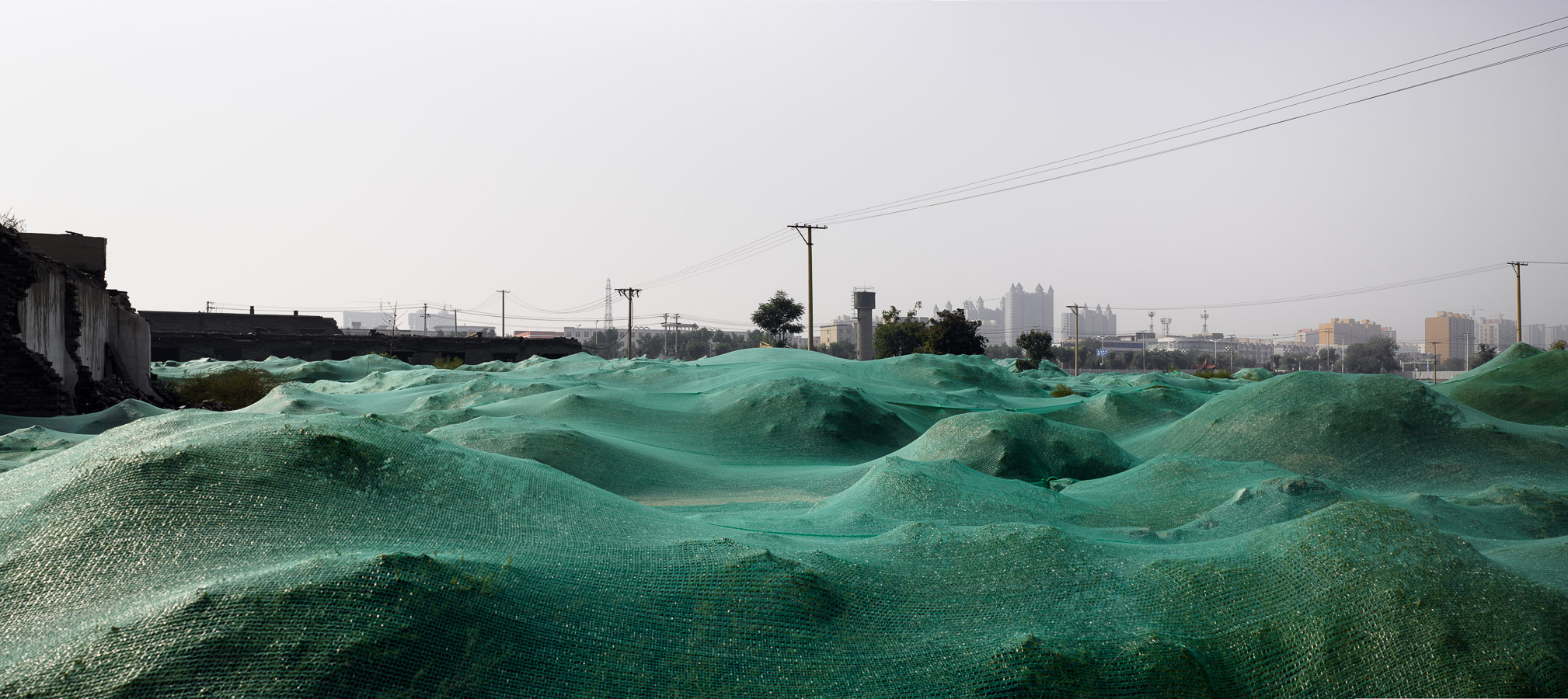
Chengxi, China
Urban development in China over the past 20 years has been profound. Once small, provincial towns have grown beyond recognition. From distinct rural landscapes, to burgeoning urban landscapes, their new identity – disguised, disfigured – are in some instances, not yet fully formed.
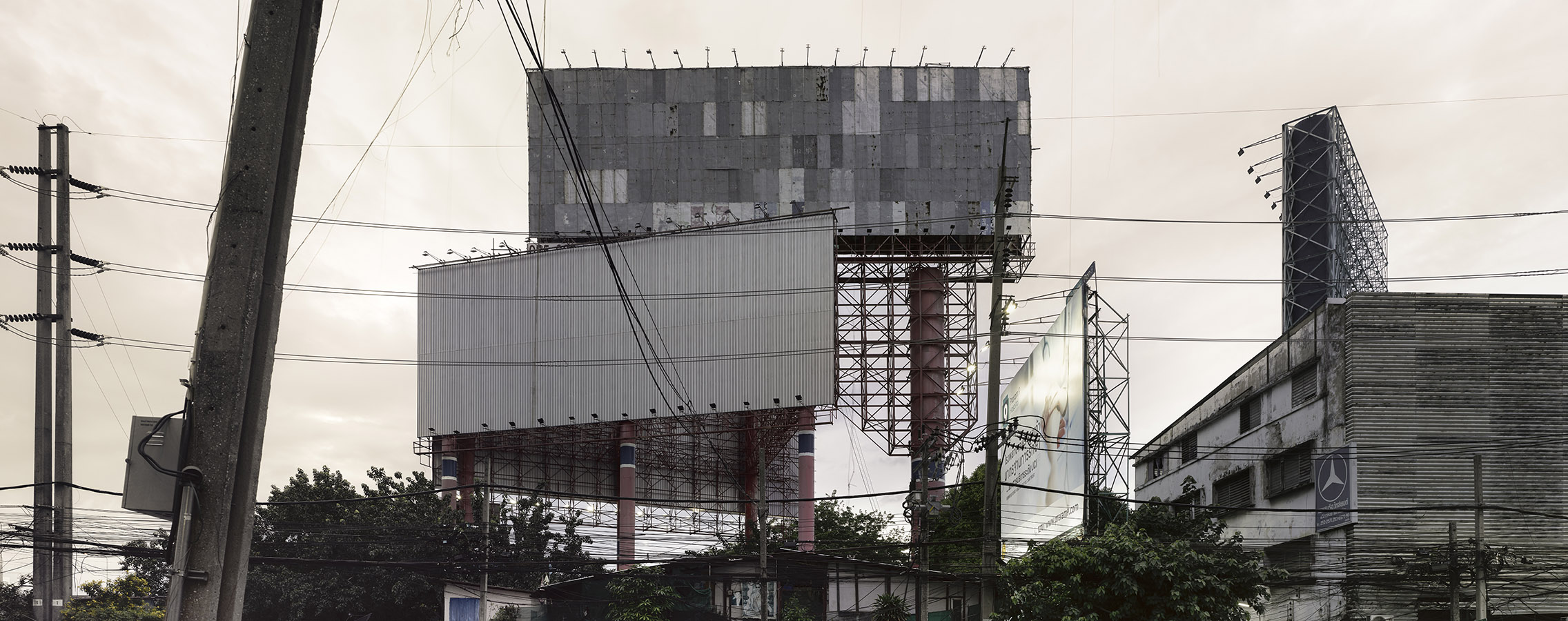
Petchaburi, Bangkok 2024
Bangkok has been a strategic market location for many centuries. Throughout, it has absorbed people, produce, ideas, whilst seemingly maintaining its distinct identity. Petchaburi Road is an east-west arterial thoroughfare in the centre of the city. It is near, but not part of the busy commercial, retail and tourist precincts. Petchaburi, 2024 presents a stripped rendition of bare billboards that contrast that vibrant character of Bangkok. It reflects an entwined cultural undertow – a subtle draining of distinction – that the visage masks. As the world’s worlds merge it is the price that must be paid.